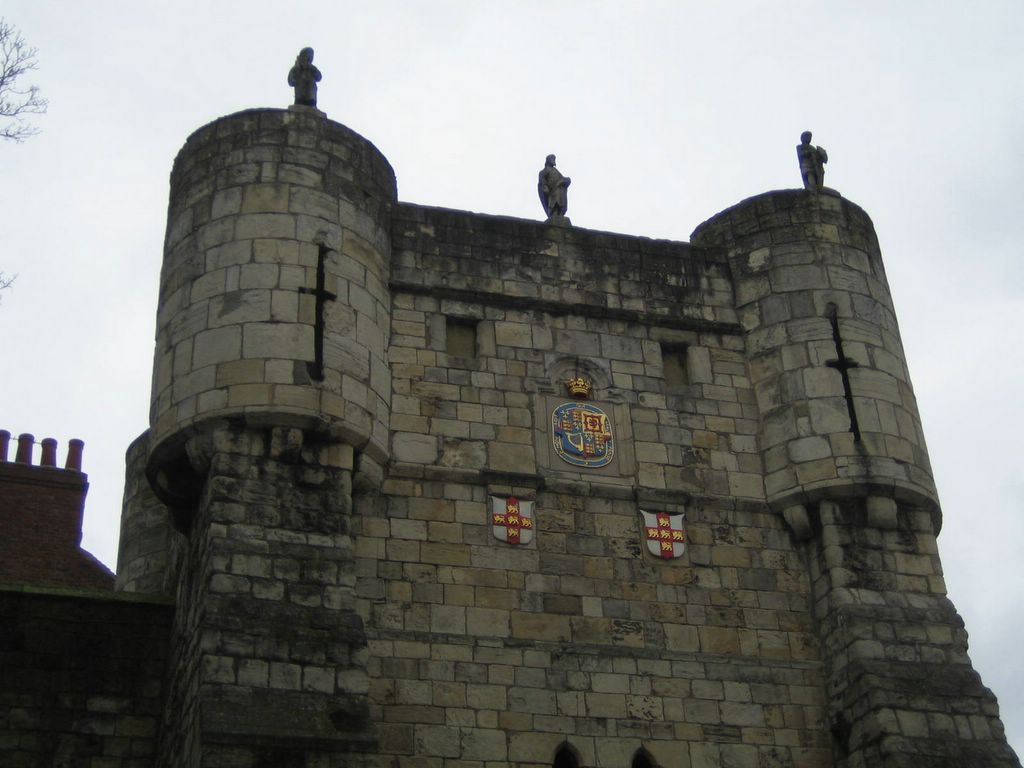|
|
Send us email (it's safe to enable JavaScript on this page) |
The center coat of arms here looks suspiciously like that of the house of York but we don't see any white roses (remember that 30 year War of the Roses thing?). The archers' slots are visible, however.
The word Bar comes from the French barre which means a toll gate -- which was the main use of these entrances except in times of war (which were very rare). The upper part of this bar was added during the 14th century.
In medieval times (and into the late 1700s), the gates were locked from 9PM to 4AM with the Lord Mayor keeping the key. (They were also locked twice on Sunday to keep the residents inside to attend church rather than leaving to hit country saloons.) Non-residents (or non-guildsmen) would have to pay tolls on merchandise brought into the city. While this sounds like a pre-emptive sales tax, we've returned to the practice of charging access for our modern cities nowadays with London taking the lead. (Supposedly this is not a tax to raise revenue, but to restrict passenger cars.)
In the early 1800s, the town council petitioned parliament to tear down the walls but King George III refused. (Where's Ronald Reagan when you need him?) Despite the regal opposition, the town managed to destroy three barbicans (explained later) and some other gates and parts of the walls. About mid century the Board of Health again proposed demolition of part of the walls as they "promoted ill-health as they obstructed the free circulation of air." Since then, the town council has taken breathing lessons and spends 100,000 British pounds a year maintaining the walls. They get much more of that back in increased touroBucks (and tourEuros).

For more narrative on York, see our description web page by clicking here.
|
|
Send us email (it's safe to enable JavaScript on this page) |